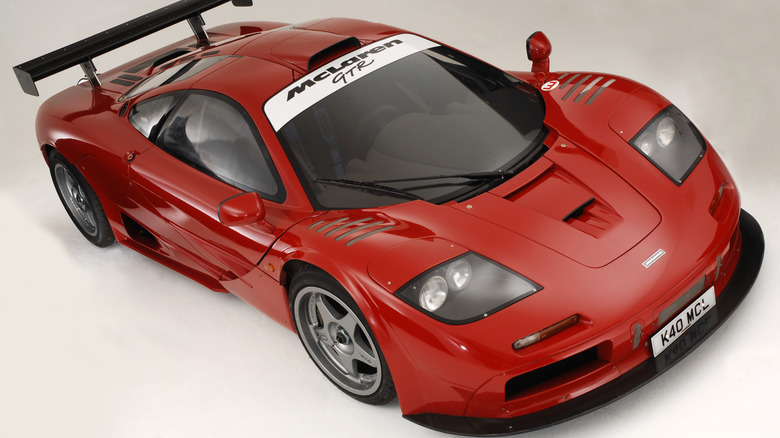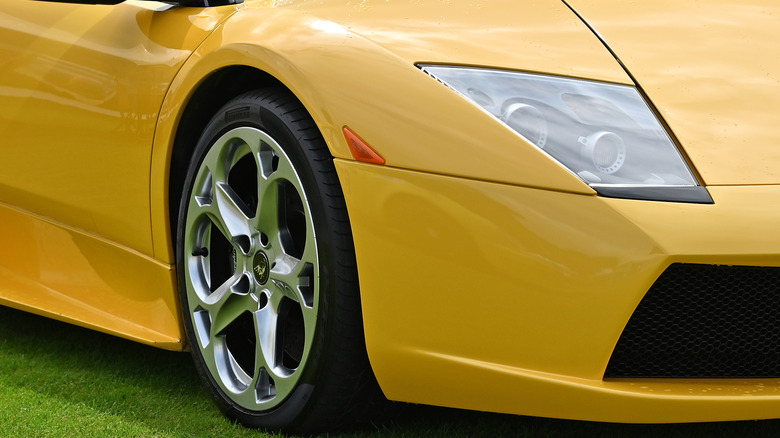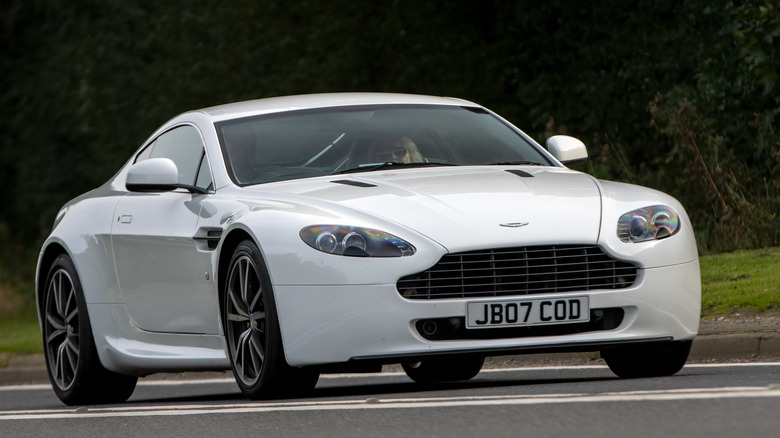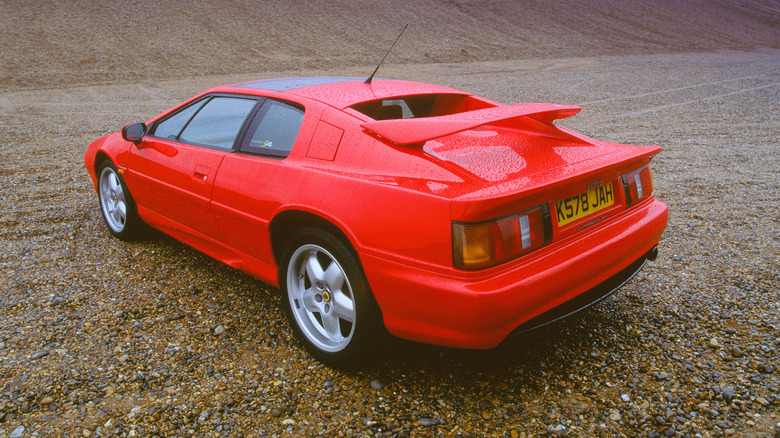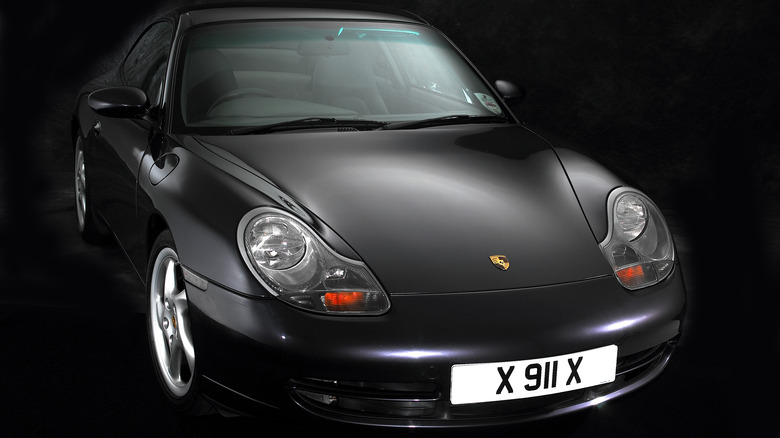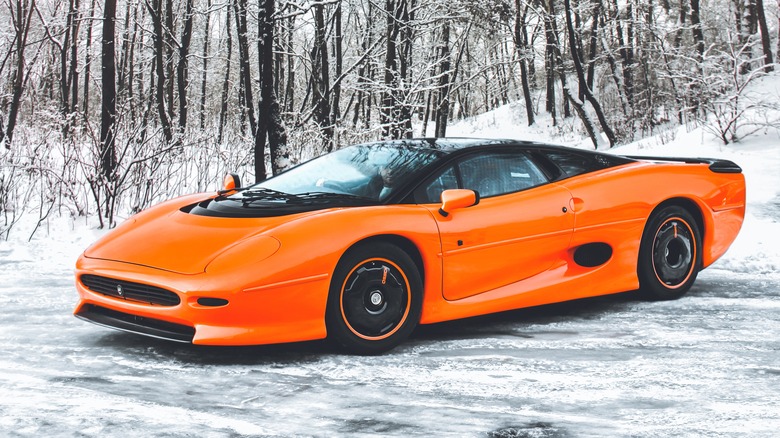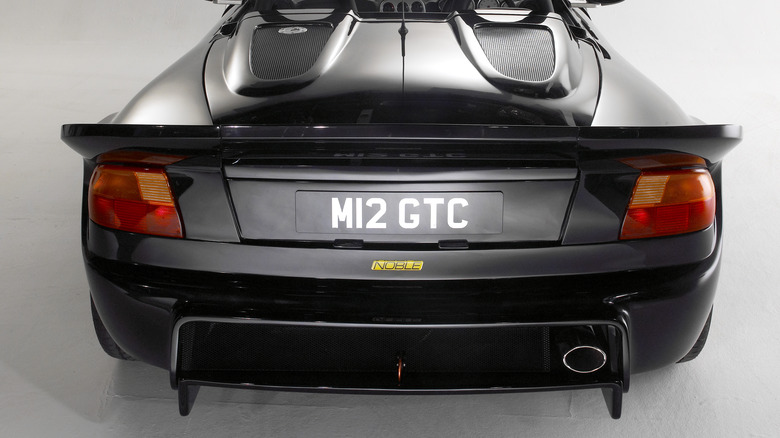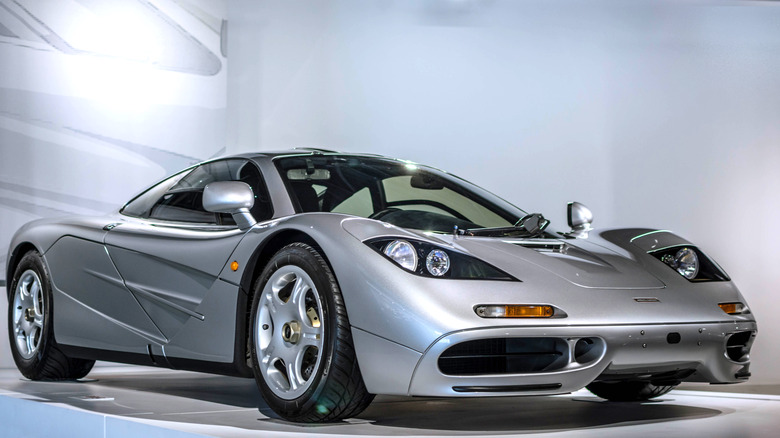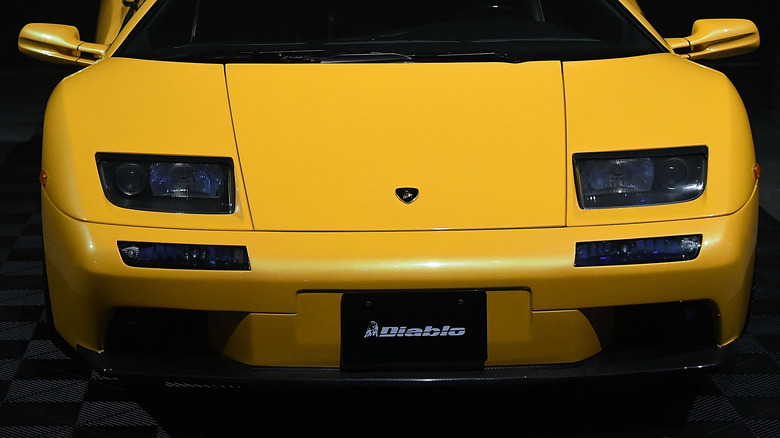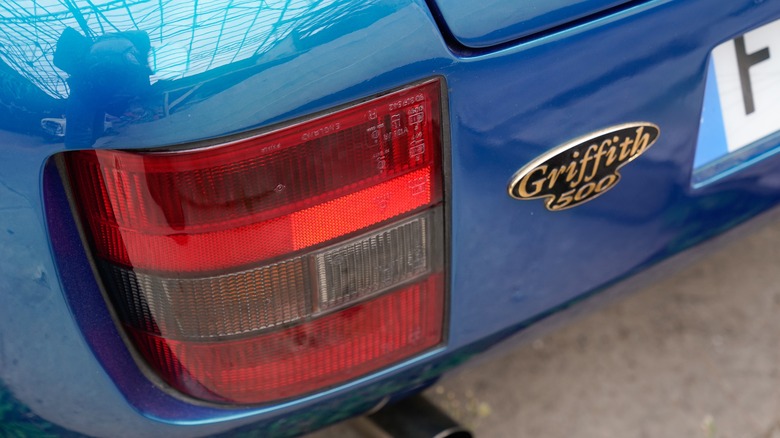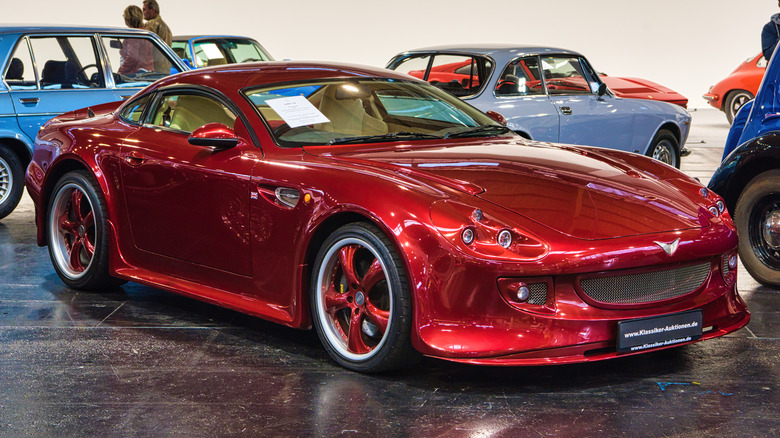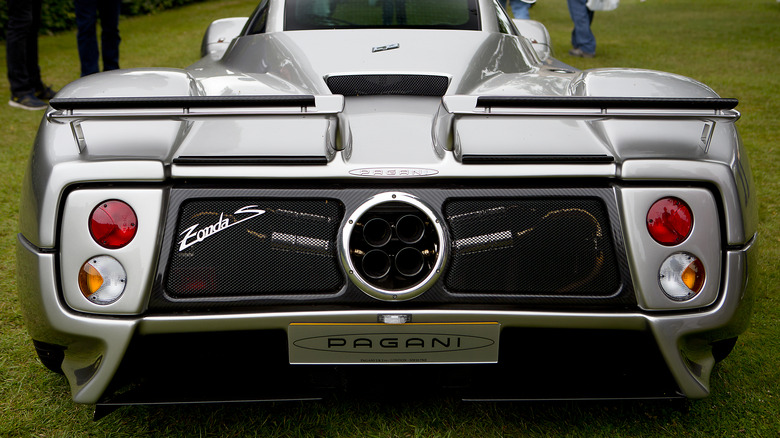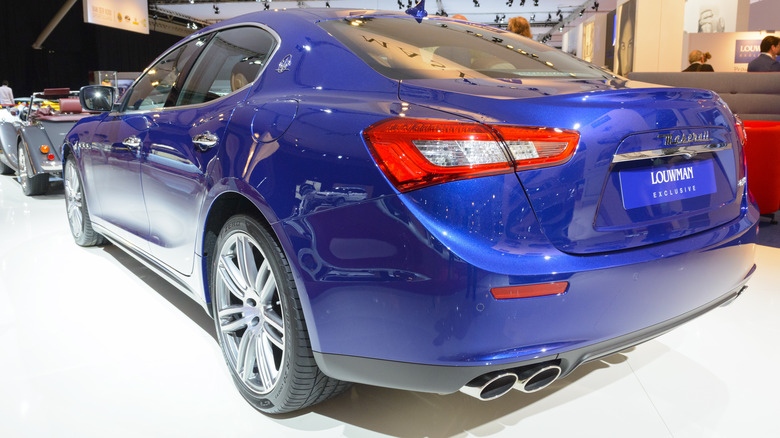12 Elite Supercars With Unassumingly Basic Parts
Supercars tend to be packed with cutting-edge parts. Carbon fiber components, forged engine internals, and precision-milled trim are all commonplace in these ultra-expensive vehicles. However, not every supercar component is bespoke. Some of the most expensive and exclusive vehicles of all time have had some surprisingly common parts. The parts in question aren't just copies either, but rather the same part from a major manufacturer's factories.
To make matters worse, there's often a price discrepancy with the supercar's manufacturer adding a hefty markup when compared to the part's original supplier. So a light or fitting that only costs a few dollars could cost a few hundred if you buy it in the wrong spot. Taillights also feature prominently in this list. They're hard to spot, as the bodywork can do a lot to disguise their origins. Our key takeaway is no matter how exclusive or exotic a vehicle is, designers can't be bothered knocking up their rear lights.
So, if you're wondering which pioneering hypercar shared its taillights with a bus, which tractor parts you might spot going from 0-60 in 3.3 seconds, and which accessible French manufacturer contributed wing mirrors to an iconic British luxury sports coupe, then read on.
Here are 12 elite vehicles that contain some far-from-elite elements.
The Lamborghini Murciélago has blinkers from a Ford
Iconic supercar manufacturer Lamborghini welcomed the new millennium with the Murciélago — one of its best-known and most desirable vehicles. Dover 570 horsepower, a 3.8 second 0-60 time, and the roar of its naturally aspirated V12 made the Murciélago stand out at the time. It also stands at just four feet tall, giving it that classic sports car profile.
Like many Lambos, the Murciélago is named after a famous fighting bull. It also means "bat" in Spanish. The flying rodent may be less impressive than a horned muscular bovine, and certain Murciélago parts are certainly more impressive than others. The side indicator light is notably swiped straight from a 1990s Ford Focus, for example. Lambo's cheeky parts switch gained plenty of media attention in 2023 when a TikTok video shot by Mat Armstrong highlighted the part. The Ford logo can still clearly be seen if tape is applied to the outside of the lights, further confirming the indicator's origins. To make matters worse, if the indicator breaks and you opt to buy a new one from Lamborghini, you'll be parting with $223. A Ford dealership will sell you two for just $8.50.
Aston Martin used a number of Ford parts
Do you remember that weird period when some fairly common Fords, like the Fiesta and the Mondeo, started looking a little bit like the Aston Martin DB9? Well, it turns out the similarities went both ways. Ford owned Aston Martin between 1991 and 2007. This led to the bold and iconic designs of the British luxury car manufacturer leaking out into other Ford properties, and some parts coming back the other way. This led to rumors that many of Aston's cars were powered by a couple of Ford's Duratec V6 engines that had somehow been welded together. While the Duratec V6 did share several components with the AM V12, they utilized different motors. However, some Ford parts did make it directly across to Aston Martins.
This includes the Ford Crown Victoria's steering wheel, which found itself in the front of an Aston Martin V8 Vantage. Ford wasn't the only manufacturer to find its parts used on Astons either. Tail lights, which seem to be a common part to outsource, were also nabbed from a Mazda 323F when Aston was manufacturing the DB7. None of the cheaper parts look out of place, and Ford's spell of ownership both saved and revitalized the classic British brand. All told, it does take a bit of the shine off knowing your DB7 isn't coach-built and crafted to perfection like the DB5 was.
A Lotus Esprit had Toyota Corolla Coupe taillights
Despite first making its debut in 1976 and last rolling off a production line in 2004, the Lotus Esprit is one of the most quintessential European sports cars. James Bond even used one as a submarine. It eventually obtained supercar status, and could maintain a serious level of performance towards the end of its run, roughly keeping pace with the 911 over the same period. It made early use of fiberglass as a lighter alternative to steel bodywork, used a rear wheel and rear-mid engine configuration, and was one of the first "folded paper" vehicles on the market. However, despite the cutting-edge features, and high-class clientele, one edition of the Esprit shared parts with one of the most accessible cars on the road.
The Lotus Esprit Series 4 nabbed its tail lights straight from a mid-80s Toyota Corolla Coupe. While an AE86 Corolla isn't too common in the grand scheme of things, the Corolla in general is a definite step down from the supercar level. The Series Four wasn't the only Esprit to outsource its tail lights. The MK II pulled its tail lights from a Rover SD1 and even the original shares a set of rear blinkers with a Fiat X1/9.
If you ever find yourself behind an Esprit, don't be too impressed. When the sun goes down, it may as well just be a punchy, affordable, and reliable Japanese coupe.
The Porsche 996 had parts from another Porsche
The Porsche 996 has never really sat well with Porsche's enthusiasts. There's the IMS bearing fault that could potentially cost owners thousands, a weird choice of headlights, and the fact the company decided to finally dump air-cooled engines after several decades in a bid to keep up with its rivals. Then there's the fact that it isn't built with 911 parts alone. Many enthusiasts see the entry-level Porsche Boxer as something that isn't quite a proper Porsche. Savings have to be made somewhere, so performance isn't on par with a Porsche 911, and certain elements of the trim are "cheaper."
So, you can imagine the feeling many Porsche enthusiasts have about the number of Boxster parts present in the 996. Porsche was struggling to stay afloat and had to save money when assembling that generation of vehicles. As a result, designers dipped into the bargain parts bin when putting it together. The entire list of parts that overlap between the Boxster and 996 is too lengthy to list out, mainly because the designers used as many as they could while still making both cars look somewhat distinct. While it's fair to say that the 996 saved Porsche, and its accessibility means it's many people's first 911, it's still somewhat of a pariah. The overlap with the Boxster contributes a lot to the overall level of resentment.
Jaguar XJ220 had Citroen CX wing mirrors
The Jaguar XJ220 is arguably the last outstanding car that the British automotive manufacturer produced. While they may be better known for their luxury sedans in recent years, the XJ220 is an out-and-out supercar. With a big V12 hidden by bodywork that would make the Italians blush, the XJ220 could churn out a still impressive 542 horsepower. Only 282 XJ220s were ever built, though 350 were planned, and the vehicle was the fastest production car on earth for a brief spell following its 1992 launch. The McLaren F1 would take its crown just a couple of years later, and the XJ220's production run ended in 1994.
Aerodynamics plays a large part in achieving that 3.6-second 0-60 time and 212 mph top speed. The sleek profile is about more than just aesthetics. It may be a shock to learn that the wing mirrors, two of the parts that jut out from the vehicle and can potentially cause major drag, actually come from a 1980s French sedan. They're pulled straight from a Citroen CX. The CX did a lot right, but you'd be forgiven for assuming that it's far from hypercar level. However, given where they ultimately ended up, the wing mirrors alone should be held aloft as the potential pinnacle of renowned auto designer Robert Opron's career.
The Noble M12 has rear tail lights from a Mondeo
Noble may arguably be the last true British sports car brand. Like many of its predecessors, it focuses on high performance, handcrafting, and limited output. That limited output is part of the reason why they're almost impossible to get in the United States. Import laws, coupled with the fact Noble was only founded in 1999, mean there are only around 220 of the company's vehicles ever imported into the U.S. It will still be a few years before some of the older models are exempted from the ban.
However, you can have a little bit of Noble on your driveway. You just have to buy a Ford Contour, which was the MK I Mondeo in Europe. The Noble M12, which helped establish the company in the low-volume market, shared its tail lights with the early 90s Ford, despite being manufactured 10 years later. The lights blend in beautifully with the back of the M12, and you wouldn't guess they're from a Ford sedan that was sold around the world, but a close inspection gives the game away. However, a major difference is the speed the lights might be moving away from you. The Contour didn't have 350 horsepower, or a 3.3 second 0-60 time.
The McLaren F1 has links to public transport
The McLaren F1 is one of the most desirable and unique vehicles ever built. It held the record for the world's fastest production vehicle from its mid-90s release date right up until the Bugatti Veyron hit the road in 2005. The vehicle had a unique configuration, with the driver's seat in the middle and two passenger seats flanking it.
It was the first production car with a carbon fiber body, its engine bay was lined with gold to help dissipate heat, and its taillights were taken directly from a bus. Those are the big, diesel-powered, things you won't see people who can afford McLarens riding. The specific bus in question is a 1982 Bova Futura, a popular car across Europe built by the Dutch.
McLaren's groundbreaking hypercar also shares its wing mirrors with the Jaguar XJ 220 and Citroen CX. If you want a car with "elite" elements, but don't want to spend too much, then the little French sedan is a hidden gem. Its wing mirrors were aerodynamic enough to feature on the two fastest cars of the 1990s after all.
Lamborghini Diablo's headlights are from a Nissan 300ZX
The Lamborghini Diablo is the company's follow-up to the controversial Countach and outperformed its predecessor in many departments. The Italian manufacturer sold the vehicle throughout the 1990s, with its production run finally ending in 2001 when the Murciélago turned up. Unlike many Lambos, it wasn't named after a successful fighting bull, with the company instead paying tribute to a different well-known horned creature. Lamborghini's status may make you think the entire car is intricately designed and manufactured in Italy, but a key part of the iconic supercar was dreamed up on an entirely different continent. Its headlights come from Japan, and were first used on a Nissan.
Unlike many other cars on this list, the Diablo isn't pulling parts from a family sedan, affordable compact, or piece of public transport. It actually comes from a very decent sports car, with the vehicle in question being the Nissan 300ZX. The Diablo and 300ZX share a set of headlights, though the Diablo's are hidden under covers when not in use. If we're debating "who wore it better," then you could argue that the Diablo's body shape also lends itself better to the headlights than the 300ZX's. They look a little too close together on the Nissan, and the more rounded front appears to make them stand out a little too much.
TVR Griffith 500 took its tail lights from a Vauxhall Cavalier
TVR is a bit of an oddball when it comes to supercar manufacturers. Based in the northern seaside town of Blackpool, and with eccentrics like the late Peter Wheeler occasionally taking the helm, the company produced some of the most outlandish vehicles the world has ever seen — including the one-off TVR Cerbera Speed 12, which was pulled from full production out of fears it would simply kill whoever was trying to drive it.
The TVR Griffith 500, a low-production two-door roadster produced through the 1990s, has one very unassuming part. If TVR is the pinnacle of British supercar weirdness, then Vauxhall sits at the other end of the spectrum. Most of what it's produced is incredibly boring, and one of its parts leaked out into the Griffith.
As with many supercar manufacturers, TVR didn't design their own taillights. Instead, they jammed the lights from a Vauxhall Cavalier in the back of their V8 fun mobile. It's a weird choice, from an equally weird manufacturer. It didn't take the shine off the Griffith though. Although TVR only produced just over 2,000 of the vehicles, the roadster has a strong following. Its owners even have an annual meetup.
The Invicta S1 has a Passat's taillights
Invicta is one of those early automotive companies that had some racing success before dying off during the Great Depression. It was briefly revived in the post-war period and somehow revived again during the early 2000s. That revival centered on the Invicta S1, a slightly Aston Martin-like supercar with a powerful 4.6-liter Ford Mustang SVT engine under the hood. A one-piece carbon-composite body ensured the engine's 320-horsepower didn't have all that much weight to shift, and the vehicle could go from a standing start to 60 mph in just five seconds, 0-100 mph in just under 11 seconds, and cap out at 170 mph. These were very impressive specs for a sports coupe in the early 2000s.
The Invicta is, for the most part, very exciting. Its front end looks a little bit terrifying, with its alien eyes and grinning mouth. However, the vehicle's rear is more uptight, business-like, and professional.
This is mostly down to the taillights, which are pulled from a Volkswagen Passat — a vehicle that has always been the ride of choice for moderately successful traveling salesmen.
Pagani Zonda's climate controls are from a Rover 45
The Pagani Zonda is a piece of automotive history. The low-production vehicle, which is currently illegal in the Untied States, can be classed as one of the first hypercars packing 850 horsepower and going from 0-60 in a mere 3.3 seconds. Newer models have knocked a full second off that 0-60 time, but the original was one of the fastest vehicles ever built in its day.
Pagani's styling is distinctly Italian and pulls inspiration from classics like the Lamborghini Miura. However, one easily overlooked piece of the Zonda's interior is a bit bland and comes straight from the sort of thing many a British grandfather has driven to and from his allotment. The climate control switches inside the Pagani Zonda are pulled straight from a very uninspiring Rover 45. It may be a tricky thing to spot at first, as the trim is unique to the supercar, but on close inspection, it's obvious that both parts are exactly the same.
A weirder addition comes in the form of the vehicle's taillights. The Zonda may both match and beat the McLaren F1's bus blinkers, as its choice of rear illumination is common amongst supercar manufacturers. The Zonda uses Hella 4169 Series rear lights, which show up on the Lamborghini Diablo, several buses, and the occasional tractor. This may be fitting, as Lamborghini started out building agricultural vehicles, and still produces them to this day.
Maserati Ghibli has a bunch of Dodge Dart parts
Stellantis is one of the largest automotive conglomerates in the world, and amongst its subsidiaries sit Fiat, Dodge, and Maserati. Technically, Stellantis isn't responsible for this one as it occurred under FCA, one of the conglomerates that eventually merged to form the auto giant. Parts sharing is pretty common when these conglomerates form. You had the likes of Jaguars, Range Rovers, Aston Martins, and Fords swapping components back in the '90s and early '00s, Volkswagen group cars have a good amount of overlap, and it was no different with FCA. That's why Maserati's luxury sports sedan featured a good amount of Dodge Dart parts. The Quattroporte also had a good number of Chrysler parts in its interior.
While this is a common occurrence, the sheer number of parts shared has garnered criticism from certain quarters. If you're buying a Maserati, you want sporty Italian luxury. Not an upper-mid-range American sedan. Things have gotten better in recent years, and Maserati is pushing forward in other departments too — including ditching the V8 in favor of an electric powertrain. However, parts sharing, along with various quality control issues and heavy depreciation, are a good reason to dodge examples from the 2010s.
